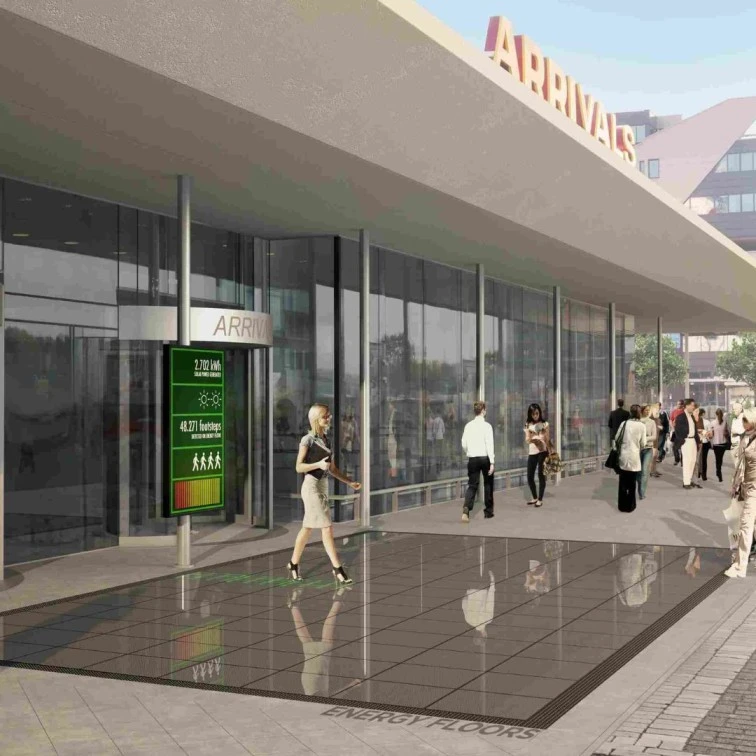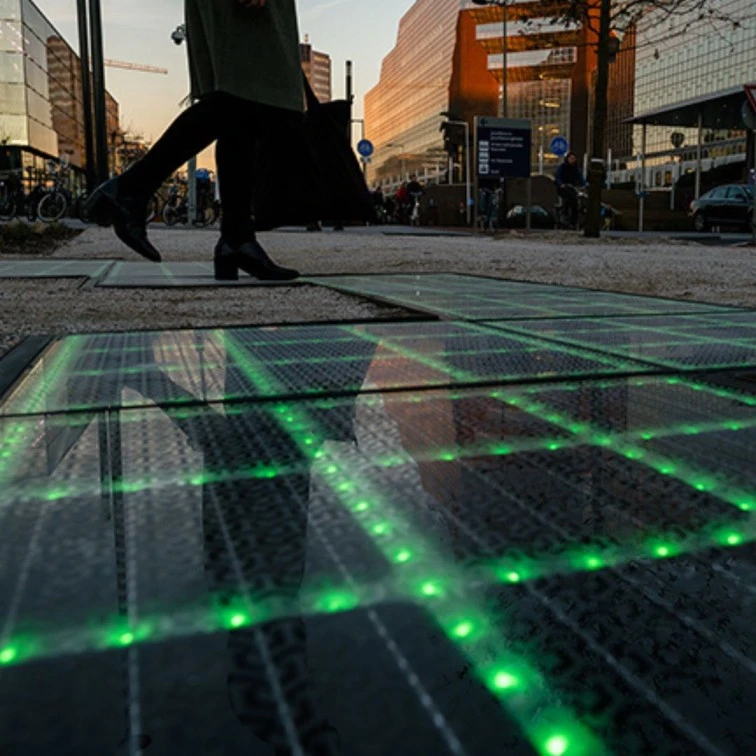As the world grapples with the challenges of climate change and urbanization, the concept of smart cities has emerged as a beacon of hope. Smart cities leverage technology and innovation to create more efficient, sustainable, and livable urban environments. Among the myriad of innovations, the integration of energy and kinetic floors has taken center stage, offering a dynamic solution to both power generation and urban aesthetics.
From sustainable building materials, intelligent lighting systems to renewable energy solutions, and smart cities are creating a more sustainable and efficient future for all.
Here are 10 smart city energy solutions that are making waves in the world of urban planning and design.
1. Energy-efficient Buildings
The construction of energy-efficient buildings is the first step in reducing energy consumption in a smart city. These buildings are designed to maximize energy efficiency, reduce energy consumption, and generate renewable energy on-site.
It involves building with sustainable and locally sourced materials, utilizing smart lighting systems equipped with occupancy sensors and daylight harvesting technology, and designing windows and glazing systems that allow for natural light penetration to minimize heat gain or loss to reduce the reliance on artificial lighting and ventilation.
These are many other sustainable building practices that make the buildings in a smart city more efficient.
Example – InterFLOR

2. Renewable Energy Sources
Smart cities are exploring renewable energy solutions, like solar panels, wind turbines, and kinetic energy systems to generate clean electricity onsite. Concert halls to stadiums and event venues have long been associated with exuberant energy.
Now that energy can be harnessed to power the events themselves, energy-generating floors in these venues capture the kinetic energy of enthusiastic crowds, providing a renewable source of electricity for lighting, sound systems, and other event infrastructure.
Likewise, malls and commercial centers are no longer just shopping destinations; they are also becoming hubs of sustainability. By incorporating energy floors in high-traffic areas, these commercial spaces can generate electricity from the movement of shoppers.
Children at play are a wellspring of energy; now, their laughter and movement can contribute to powering public spaces. Parks and playgrounds and tourist attractions can also integrate energy floors that generate electricity from the playful activities of children and the explorations of tourists. This sustainable solution not only educates young minds about clean energy but also enhances the recreational experience for families.
3. Smart Grids
Smart grids are modernizing the way we distribute and consume energy. They use digital communication technology to monitor and control the flow of electricity, reducing energy waste and ensuring a stable and efficient energy supply.
Unlike traditional grids, which operate on a one-way communication model, smart grids enable bidirectional communication between utility providers, consumers, and various components of the grid. This two-way flow of information enables real-time monitoring, data analysis, and efficient energy management in a smart city.

Energy storage systems (ESS) are advanced technologies that allow smart cities to capture and store excess electricity generated during peak periods and release it during times of high demand. These systems bridge the gap between energy generation and consumption, providing a flexible and reliable solution to balance supply and demand. In the context of smart cities, ESS plays a multifaceted role that extends beyond mere energy storage by ensuring a stable and efficient energy supply throughout the day.
5. Intelligent Lighting Systems
Smart lighting goes beyond the traditional concept of illumination. They incorporate advanced technologies, sensors, and controls to provide adaptable and dynamic lighting solutions that enhance energy efficiency, user experience, safety, and overall urban aesthetics.
In a smart city, intelligent lighting systems serve as a key component in creating vibrant, sustainable, and interconnected urban environments. These lighting systems use sensors to adjust the brightness and intensity of streetlights, reducing energy consumption and light pollution.
Smart cities also make use of energy floors to generate energy for these lighting. Imagine a city where the simple act of walking not only keeps you healthy but also powers the very streetlights that guide your way. Kinetic street lighting is a revolutionary smart city energy solution that transforms pedestrian footfalls and vehicular traffic into a renewable energy source.
As citizens stroll through well-lit streets, the kinetic energy generated is captured by embedded floor panels, generating electricity that lights up the urban landscape. This innovation not only reduces energy consumption but also enhances public safety and urban aesthetics.
6. Electric Vehicles (EV)
Smart cities are promoting the use of electric vehicles, which are more energy-efficient and produce fewer emissions than traditional gas-powered cars. Energy floors, which capture and convert kinetic energy from footsteps and movement into electricity, have already made their mark in various urban applications. Now, this technology is poised to make its way into the realm of electric vehicles.
These mechanisms absorb the energy generated by the friction between the tires of electric vehicles and the road. This energy is then converted into electrical power through piezoelectric or electromagnetic systems. This generated electricity can either directly power the vehicle’s electric motor or be stored in the vehicle’s onboard battery for later use.
7. Smart Transportation Systems
The use of smart parking and payment system and the use of sensors, cameras, and other data sources to gather real-time information on traffic flow, road conditions, and vehicle movement are some beneficial features of the transportation systems in a smart city. These systems optimize traffic flow, make payment easier, and reduce the time and energy spent searching for parking spots.
These bustling hubs of public transportation have untapped potential beneath our feet. Imagine train stations and bus stops that capture the kinetic energy of commuters, powering essential station services, such as lighting, signage, and ticketing machines. This innovative approach not only reduces congestion and the carbon footprint of transportation hubs but also enhances the overall passenger experience.
Airports and transportation terminals, bustling with constant movement are also not exempted. By installing kinetic floors in these busy terminals, cities can capture the energy of travelers and use it to power various amenities, reducing operational costs and promoting a greener approach to air travel.
8. Energy-efficient Appliances
In offices, homes, schools, malls, and other possible places, Energy-efficient appliances form a critical foundation for smart cities striving to optimize resource consumption and reduce environmental impact.
These appliances, equipped with advanced technologies and designed to minimize energy use without compromising performance, are key players in the pursuit of a greener and more efficient urban landscape. They are designed to use less energy than traditional appliances, reducing energy consumption, especially in homes.
9. Green Spaces
Green spaces not only improve air quality and biodiversity but also reduce the urban heat island effect, decreasing the need for air conditioning. They encompass a spectrum of natural environments, from lush parks and tranquil gardens to community orchards and rooftop farms.
In a smart city, these spaces are more than just pockets of vegetation – they represent an intentional effort to preserve nature, promote well-being, and create a balanced urban ecosystem.
10. Energy Monitoring and Management Systems
These systems use real-time data to track energy consumption, identify inefficiencies, and optimize energy usage, reducing energy waste and lowering costs.They encompass a range of technological solutions designed to track, analyze, and control energy consumption across various sectors of a city.
Energy monitoring and management systems leverage data collection, real-time monitoring, and advanced analytics to provide insights into energy usage patterns, enabling informed decision-making and targeted interventions.


Conclusion
These are just a few examples of the innovative and sustainable energy solutions that smart cities are implementing. With technology and innovation continuing to advance, the possibilities for smart city energy solutions are endless.
As the sun sets on our exploration of these ingenious smart city energy solutions, it becomes clear that the integration of kinetic floors holds immense potential for transforming urban landscapes.
The journey to a greener tomorrow begins with a single step – or perhaps, a well-placed footfall on a kinetic floor. By creating sustainable and efficient cities, we can create a brighter, cleaner, and more sustainable urban future for all.
